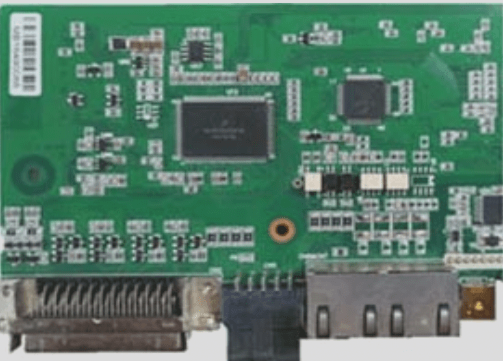In power electronics, engineers sometimes need to reject a portion of a specified waveform while allowing the remaining part to pass through. This requires the design of a special circuit known as a clipper circuit. A clipper circuit is designed to eliminate a section of an input signal while allowing the rest to pass. The portion of the waveform that is below or above the cutoff voltage is referred to as the “cut-off” or “clipped-off” section. Standard clipping circuits typically involve both linear and non-linear components, such as diodes and resistors, without using energy-storing components like capacitors. Clipping circuits play an essential role in power electronics by helping to:
- Eliminate unwanted noise in the waveform amplitude.
- Convert a sine wave from any system into a square wave, thus acting as a square wave converter.
- Maintain the amplitude of the desired waveform at a constant value.
There are various types of clippers, one of which is the diode clipper. These include both positive and negative diode clippers. In Part 1 of this discussion, we will focus on the positive clipper circuit, while Part 2 will cover negative clippers. Let’s explore the details further!
Positive Clipper Circuits
The goal of designing this type of clipper circuit is to attenuate the positive portion of the input signal from a power system. Several types of positive clippers are described below:
Positive Series Clipper
This type of clipper involves a diode connected in series with the input signal, which attenuates all the positive portions of the waveform.
Circuit Diagram of the Positive Series Clipper

Figure 1: Positive Series Clipper
Positive Input Cycle
When a positive signal is input, point A becomes positive with respect to point B in the circuit. This reverse-biases the diode, causing it to act like an open switch. As a result, no current flows through the circuit, and the voltage across the load is zero. Therefore, the output voltage (VO) is zero.
Negative Input Cycle
In contrast, when the input signal is negative, point A becomes negative relative to point B. This forward-biases the diode, allowing it to conduct like a closed switch. The voltage across the load resistor becomes equal to the input voltage, so VO equals VI.
Waveforms of the Positive Series Clipper

Figure 2: Positive Series Clipper Waveforms
From the discussion of Figure 1, we can see that only the positive part of the input signal is clipped. This behavior is further illustrated in the waveforms above. Unlike the ideal waveform, some positive portions are still visible in the practical output due to the diode’s 0.7V conduction voltage. This explains the difference between the ideal and practical waveforms.
Positive Series Clipper with Positive Reference Voltage (Vr)
This is a clipper circuit where a diode is connected in series with the input signal and is biased using a positive reference voltage. It effectively attenuates the positive portion of the waveform.
Circuit Diagram

Figure 3: Positive Series Clipper with Positive Vr
The positive cycle of the input reverse-biases the diode, and the reference voltage (Vr) is seen at the output. During the negative cycle of the input, the diode becomes forward-biased, begins conducting, and produces the output waveform as shown below.

Figure 4: Input and Output Waveforms of Positive Series Clipper with Positive Vr
Positive Series Clipper with Negative Reference Voltage (Vr)
This electrical clipper circuit has a diode connected in series with the input signal, biased by a negative reference voltage, and serves to attenuate the positive portion of the waveform. Refer to Figure 5 below:

Figure 5: Positive Series Clipper with Negative Vr
In the positive input cycle, the diode operates in reverse mode, causing the reference voltage (negative) to appear at the output. When a negative signal is applied, the diode becomes forward-biased and conducts like a closed switch, resulting in an output signal where the positive portion exceeds the reference voltage.
Below are the waveforms of the input and output for this system.

Figure 6: Waveforms for Positive Series Clipper with Negative Reference Voltage (Vr)
Positive Shunt Clippers
This clipper circuit has the diode connected in parallel (shunt) with the input signal, and it attenuates the positive portion of the waveform.
Circuit Diagram

Figure 7: Circuit Diagram of the Positive Shunt Clipper
Positive Input Cycle
When the input signal is positive, point A becomes positive relative to point B. This forward-biases the diode, causing it to conduct like a closed switch. As no current flows through the load, the output voltage (VO) is zero.
Negative Input Cycle
During the negative cycle, point A becomes negative with respect to point B, reverse-biasing the diode and making it act like an open switch. The voltage across the load resistor becomes equal to the input voltage, so VO equals VI.
Waveforms of the Positive Shunt Clipper

Figure 8: Positive Shunt Clipper Waveforms
Unlike the ideal waveform, some positive cycle portions are still visible in the practical output, caused by the diode’s 0.7V conduction voltage.
Positive Shunt Clipper with Positive Reference Voltage (Vr)
In this configuration, the diode is connected in shunt with the input signal, and the biasing is done using a positive reference voltage.
The circuit is connected as shown below.

Figure 9: Circuit Diagram of Positive Shunt Clipper with Positive Reference Voltage (Vr)
Positive Shunt Clipper with Negative Reference Voltage (Vr)
This circuit has a diode connected in shunt with the input signal, with biasing achieved via a negative reference voltage.
The circuit connection is shown below.
Post navigation




